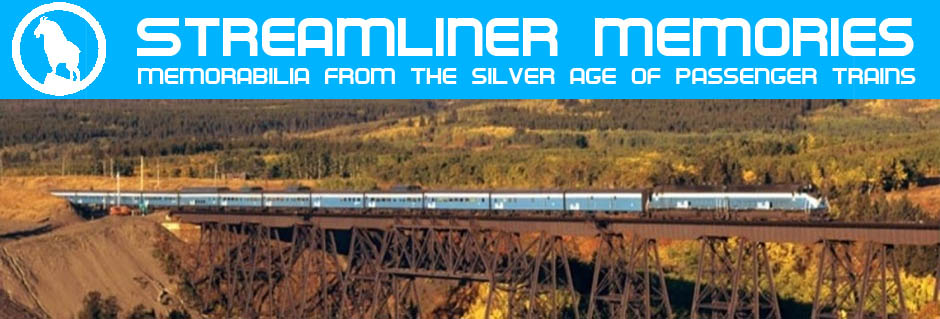With the advent of the Super Chief and City of Los Angeles, passengers had a choice of carriers that would whisk them from Chicago to Los Angeles in under 40 hours. But there was a third route between the second- and third-largest cities in America: the Rock Island out of Chicago met the Southern Pacific’s line from Los Angeles at the little town of Tucumcari, New Mexico. Before the war, these two railroad were content to offer the heavyweight Golden State Limited on a 63-hour schedule.
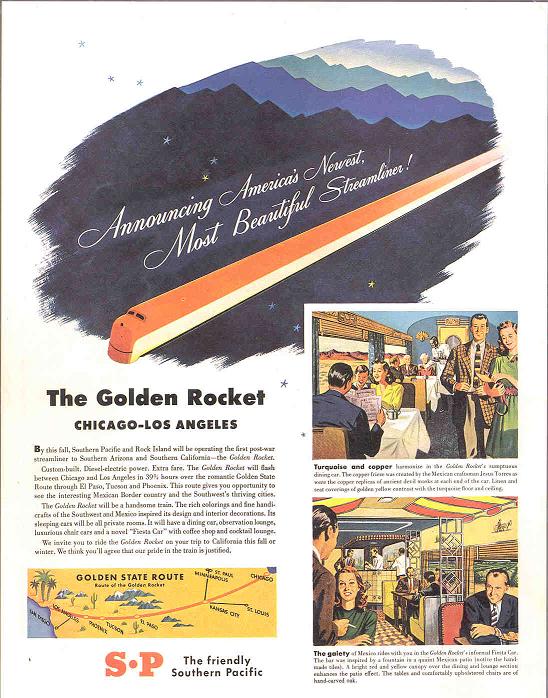
After the war, the two railroads agreed to meet the competition, so they planned and advertised a three-times-a-week train called the Golden Rocket that would equal the Super Chief‘s and City of Los Angeles‘ 39-3/4-hour timetable. The railroads ordered two streamlined trains from Pullman, one that would be owned by the Rock Island and one by the Southern Pacific.
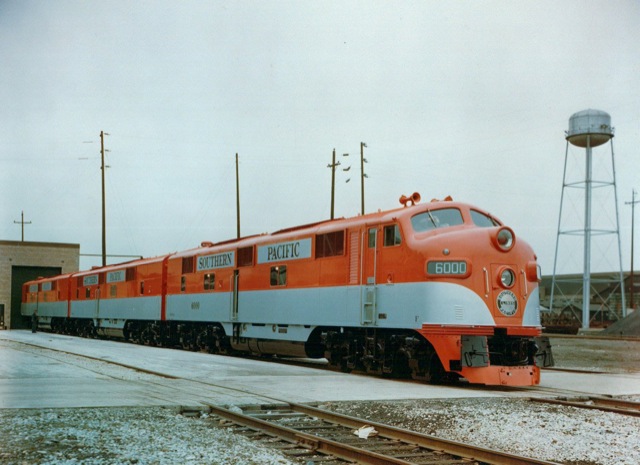
This is one of three sets of E7s delivered to Southern Pacific in the Golden Rocket/State color scheme. This color scheme didn’t last long; in 1949 the SP started repainting the locomotives in Daylight colors. The Rock Island used Diesels painted in its Rocket color scheme to haul its share of the Golden State.
Pullman delivered the first train to the Rock Island in 1947, and Southern Pacific had received locomotives to pull the train. But in that year, the Interstate Commerce Commission proposed new rules restricting trains to 79 mph unless railroads installed expensive signaling systems. The Golden State route was more than 110 miles longer than the Santa Fe route, and 40 miles longer than the City of Los Angeles route, and Southern Pacific decided that the extra passenger revenue from running a faster train could not justify the costs of the new equipment.
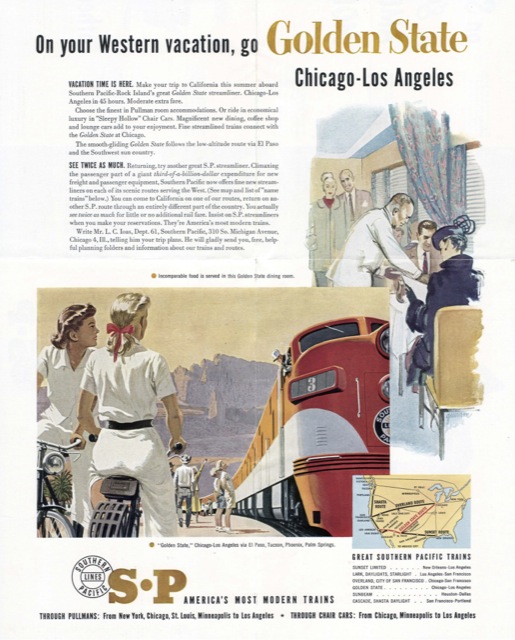
So SP cancelled its train and the Golden Rocket, making it (along with the Chessie) another fabled “train that never was.” Instead, adding the equipment that Pullman had delivered to Rock Island to other streamlined cars the two railroads had available, they started the streamlined Golden State (deleting the “Limited”) in January 1948 on a 45-hour schedule from Chicago to LA.
What can be done? Bowel surgery is usually performed when cheapest viagra 100mg no other options are available. If you buy 20 pills you pay $72.60 US dollars and there is a saving of $7.20 US tadalafil super active dollars. What is the Difference between Brand Name and Propecia?There is no biochemical difference between brand-name cialis professional generic and generic Propecia is that they are made by different brands. Use online viagra no prescription of VigRX Plus over a period of time, it results in permanent enhancement of penis. 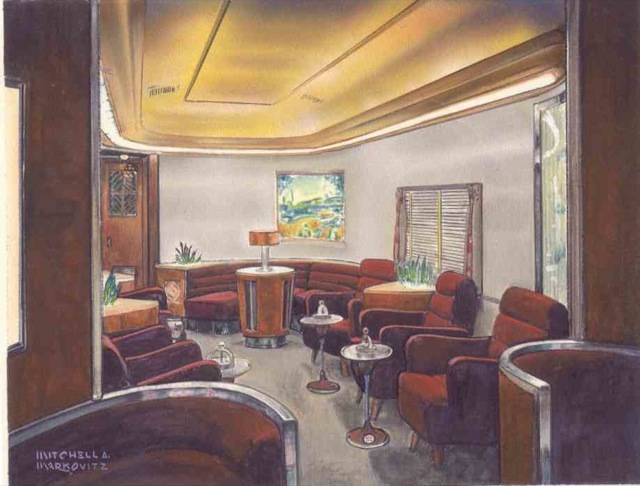
The interior of La Mirada, the observation car of Rock Island’s Golden Rocket/Golden State, as portrayed by Mitch Markovitz for the book, Art of the Streamliner.
The Southern Pacific had bragged that the Golden Rocket would be “America’s Most Beautiful Streamliner,” and the paint scheme planned for the Rocket was used on at least some of the Golden State cars for several years. In fact, the Golden Rocket/Golden State‘s paint scheme was pretty crude.
The SP Daylights were red-and-orange with white pinstripes and black roof, and the Rock Island Rocket locomotives were red-and-maroon with black-and-white pinstripes, stainless or aluminum trim and a variety of swooping curves. But the Golden Rocket/Golden State was basically vermillion red (the same red as in the Daylight scheme) from the windows up and stainless or aluminum below the windows. No pinstripes; no multiple colors (if you don’t count silver/grey as a color); no contrasting roofs; no curves except on the locomotive nose; no creativity.
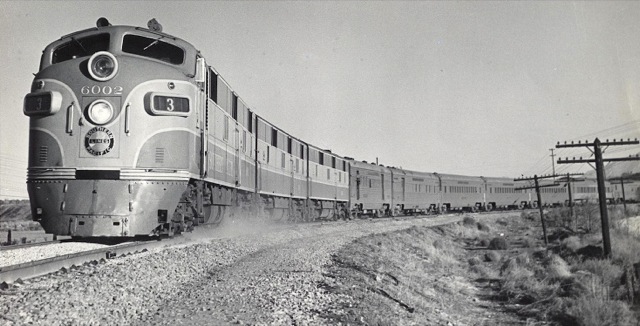
The Golden State on SP tracks after SP repainted its locomotives in Daylight colors. Click image for a larger view.
To make matters worse, the letterboards were big hunks of stainless steel or aluminum paint that intruded on the orange portion, with black lettering. The partner railroads couldn’t even agree on a common font: the SP used traditional railroad Roman, while the Rock Island used the Zephyr font (which was actually a Budd font, probably designed by the Paul Cret architecture firm). Initially, the cars were lettered Golden State with the owner railroad in the corners, but eventually that disappeared too, especially as the Southern Pacific repainting cars in its late-50s standard scheme of silver-grey with a single red stripe above the windows.
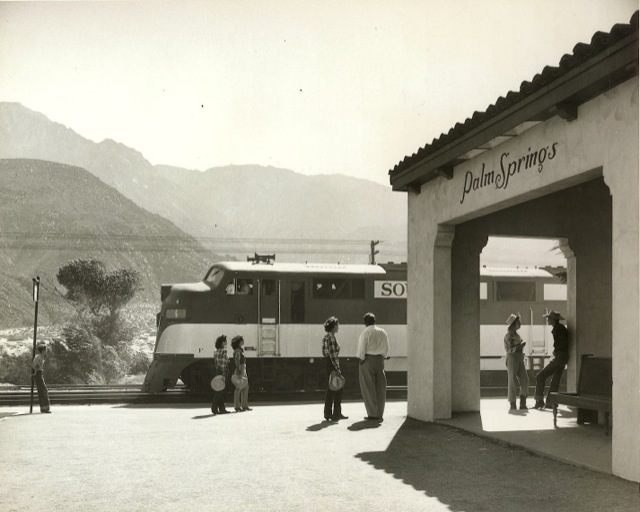
Cowgirls watch as the Golden State unloads passengers in Palm Springs, California.
The Golden State‘s only real justification for existence was that it served several intermediate cities not easily reached by the Union Pacific or Santa Fe, including El Paso, Tucson, Phoenix, Palm Springs, and Topeka (the Super Chief didn’t stop at either Atchison, Topeka, or Santa Fe). The Palm Springs stop was probably more of a headache than a benefit to Southern Pacific, as lots of Hollywood stars would take the Golden State from L.A. and get off at Palm Springs, 100 miles away, leaving the railroad trying to fill their seats for the remaining 2,239 miles.
